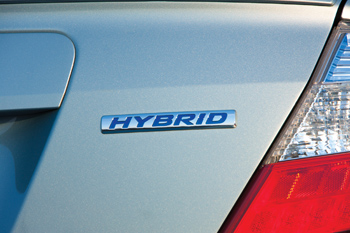Mazda’s SKYACTIV Technology
Mazda has been making big waves in the automotive world with its SKYACTIV technology. Introduced in 2011 in the Japanese market, Mazda’s ultra high-compression, direct injection gasoline engines are achieving fuel economy numbers that rival many hybrids – and at much less cost. These engines include the SKYACTIV-G 1.3L engine in the 2012 Mazda 2, the 2.0L in the 2012 Mazda 3 and 2013 CX-5, and the 2.0L and 2.5L engines in the 2014 Mazda 6 and CX-5.
Performance Rocker Arms
Overhead cams have been used in many European and Asian engines for years, so when Ford opted to go the overhead cam route with their 4.6L V8 engine, some predicted pushrod engines were on their way out. But, GM stuck with the pushrod design for their LS engines as did Chrysler with their 5.7L and 6.2L Hemi engines. When you add in all the older engines and current aftermarket block/head combinations that still use pushrods and rocker arms, it’s easy to understand why rocker arms and pushrods are still a hot topic for performance engine building.
Servicing The Chrysler 3.5L Engine
If ever there was a service opportunity ripe for the taking, Chrysler’s 3.5L SOHC V6 engine (and its 2.7L, 3.2L and 4.0L cousins) is it. This engine was introduced back in 1993 as an “upgrade” from the earlier 3.3L pushrod V6 engine. Some would question whether the move was a step forward or backward because the 3.5L V6 (and its variants) has a poor reputation for reliability. Lubrication issues, oil sludging, coolant leaks, overheating and low-mileage engine failures have plagued this engine family from the get-go.
Servicing Variable-Assist Power Steering Systems
Variable-assist, variable-rate or variable-effort power steering is used on a growing number of vehicles. Variable assist is a way of providing the best of both worlds: finger-tip parking maneuverability at low speed and reduced assist at higher speeds for greater stability and road feel. As a vehicle’s speed increases, less effort and assist are needed to steer the wheels. Variable-rate steering, by comparison, applies more assist at low speed when it is needed most and reduces assist at higher speeds when it is needed least.
How Software Is Changing Braking: Electronics Are Driving Technological Advancements
There was a time when advancements in import brake technology were entirely hardware based. The change from drum brakes to disc brakes, the introduction of semi-metallic and ceramic brake pads and the addition of power brakes as standard equipment were all changes achieved by redesigned and improved brake system components. Today, electronics is driving most of the advancements in braking technology.
Diagnosing TPMS Problems
The first step in any diagnostic strategy is to figure out whether or not your customer’s vehicle actually has a TPMS problem. Any number of things can cause the TPMS warning light to come on or flash. The light should illuminate when a tire is low, and should eventually go out after the low tire has been inflated to its recommended pressure. If the light remains on after checking/inflating the tires, or if it flashes and remains illuminated, it may signal a TPMS problem that will require further diagnosis.
Servicing Honda Civic Hybrid Vehicles
The number one problem with Honda Civic Hybrids has been the high-voltage IMA battery. The first generation cars use a 144-volt nickel metal hydride (NiMH) battery, while second generation cars use a higher voltage 158.4V NiMH battery. Third generation cars use a totally different kind of battery, a Lithium-Ion 158V battery that is about 30% more powerful than that in the previous models.

Servicing Chrysler’s Versatile 3.3L And 3.8L Engines
These engines have a mixed reputation for being high-mileage, dependable powerplants as well as noisy motors that can fail at relatively low mileage. Some 3.3/3.8L V6s have racked up well over 200,000-plus miles on the odometer with no major problems (except some oil burning), while others have called it quits at 70,000 to 80,000 miles.
Component Connection: The Mod Squad – Boosting Engine Power With Turbochargers And Superchargers
The power that a naturally aspirated engine can make is limited by its displacement and how efficiently you can make it breathe with cylinder head, camshaft and induction system modifications. The engine can only inhale so much air because the atmospheric force that’s pushing air into the engine is only 14.7 lbs. per square inch at sea level. To make matters worse, atmospheric pressure decreases with elevation. Air density also decreases with temperature because hot air is thinner than cold air.
Tech Update: Air, Fuel And Oil Filter Replacement Intervals, Take Motorists’ Driving Habits Into Account
Filters have long been a common maintenance item. But with longer factory service intervals and “lifetime” filters becoming more common, how often do filters really need to be replaced? There’s no simple answer. The safest advice used to be to follow the filter service interval recommendations in the vehicle owner’s manual (assuming the owner’s manual hasn’t been lost and that somebody will actually read it!).
How Software Is Changing Braking
There was a time when advancements in brake technology were entirely hardware based. The change from drum brakes to disc brakes, the introduction of semi-metallic and ceramic brake pads, and the addition of power brakes as standard equipment were all changes that were all achieved by redesigned and improved brake system components. Today, electronics is driving most of the advancements in braking technology.
Servicing The GM 3.1L V6 Engine
The General Motors 3.1L V6 engine enjoyed a long production run from 1988 through 2005. More than 10 million of these engines were built during this period. The engine itself went through continual evolution and improvement during its production life, including Gen II and Gen III versions, plus an “Enhanced 3100” version from 1999 to 2001.
